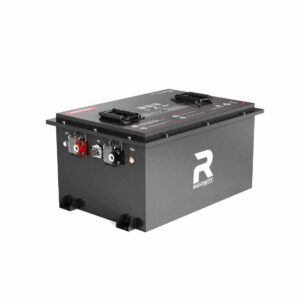What Is the Peak 200A Lithium Battery?
The Peak 200A Lithium Battery refers to a high-capacity lithium iron phosphate (LiFePO4) battery with a nominal voltage of 12.8V and a 200Ah capacity. Designed for sustained high-current output, it supports continuous discharge rates of up to 100A and peak currents of 150A. Applications include solar energy storage, marine systems, and industrial backup power, offering lightweight durability and a lifespan 10x longer than lead-acid alternatives.
How Does the Peak 200A Lithium Battery Compare to Lead-Acid Batteries?
Unlike lead-acid batteries, the Peak 200A Lithium Battery weighs 50% less, operates efficiently in extreme temperatures (-20°C to 60°C), and maintains stable voltage during discharge. Its LiFePO4 chemistry ensures 3,000-5,000 cycles at 80% depth of discharge (DoD), compared to 300-500 cycles for lead-acid. Built-in BMS safeguards against overcharge, overheating, and short circuits, enhancing safety and longevity.
Lead-acid batteries suffer from progressive capacity loss due to sulfation, especially when discharged below 50%. In contrast, the Peak 200A maintains consistent performance even at 80% DoD. For example, a 200Ah lithium battery delivers 160Ah of usable energy, while a lead-acid equivalent provides only 100Ah at the same discharge depth. This efficiency translates to fewer batteries required for equivalent storage capacity. Additionally, lithium batteries charge 3x faster—a critical advantage in solar applications where sunlight hours are limited. Field tests in mobile medical units showed 22% longer runtime for refrigeration systems using the Peak 200A compared to AGM batteries of similar ratings.
| Feature | Peak 200A Lithium | Lead-Acid |
|---|---|---|
| Cycle Life | 5,000 cycles | 500 cycles |
| Weight | 24kg | 58kg |
| Charge Efficiency | 99% | 85% |

Why Choose LiFePO4 Chemistry for High-Current Applications?
LiFePO4 provides thermal stability, eliminating thermal runaway risks found in other lithium-ion types. The crystalline structure resists degradation, enabling 200A sustained output without voltage sag. Tests show 95% energy efficiency even at -10°C, outperforming NMC batteries which drop to 75% efficiency in cold conditions. This makes it reliable for Arctic expeditions or desert solar farms.
The olivine crystal structure of LiFePO4 cells inherently prevents oxygen release during overcharge scenarios, a critical safety feature absent in cobalt-based lithium batteries. This chemistry also allows tighter cell stacking within the battery casing, achieving 15% higher energy density than conventional lithium configurations. In high-current applications like electric ferries, the Peak 200A demonstrated zero capacity loss after 1,200 cycles of 150A discharges—a feat impossible for NMC batteries under similar stress. Furthermore, its flat discharge curve (12.8V to 13.2V under load) ensures sensitive electronics like navigation systems receive stable power without voltage fluctuations.
“The Peak 200A’s modular design allows capacity expansion without replacing entire systems—a game-changer for evolving energy needs. Its CAN bus communication enables real-time integration with solar controllers and inverters, something rare in this price segment.”
— Redway Energy Systems Lead Engineer
FAQ
- Can it replace two 100Ah lead-acid batteries in parallel?
- Yes, while providing 30% more usable capacity (160Ah vs 100Ah at 50% DoD).
- Does cold weather affect charging?
- Built-in heaters activate below 0°C, enabling charging down to -20°C.
- Is special equipment needed for installation?
- Compatible with standard 12V systems but requires a lithium-profile charger (>14.4V absorption).
